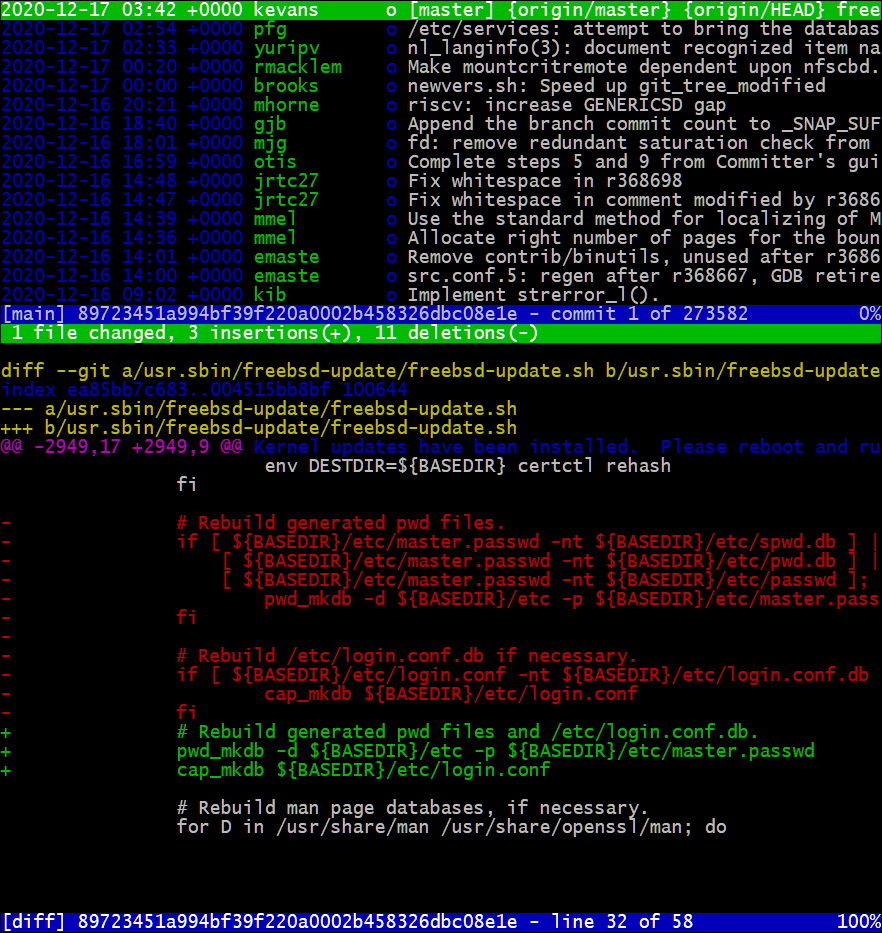

This is done by editing /home/svn/repos/conf/passwd file, for example: Now you'll need to create a per-user authentication for svnserve.

If no errors occurred, check running daemon: Svnserve_flags="-d -listen-port=3690 -listen-host 127.0.0.1"Ĭhange 127.0.0.1 to another IP, accessible from other machines, if you need that. Then, add this lines to yous /etc/rc.conf:

The Port also will create svn user and svn group (check for both of them in /etc/passwd and /etc/group files to be sure). You will get a fresh empty repository in /home/svn/repos.
#Svn client freebsd install#
# make WITHOUT_BDB=1 WITH_SVNSERVE_WRAPPER=1 WITH_REPOSITORY_CREATION=1 install clean So, after installing devel/subversion port: It uses its own protocol over TCP, so for all operations with repository you'll be using a svn:// URL scheme, for example:

I set a term in italics if it is my intention that you replace that term with your own value when you use these instructions.I advise you at first try to use svnserve daemon which comes with subversion. There is an alternate technique to make the repository available over http, which I did not do.īelow are the setup steps COPIED FROM the forum post above, with modifications by me. I knew I wanted to use the “svnserve” daemon to make my repository over the svn protocol. I encountered a few difficulties using the above approaches, so below I explain the steps I used to set things up. Here is a helpful forum thread on the subject of setting up a subversion server. Here is a good preexisting article on the subject of setting up a subversion server. This guide was written using FreeBSD 10.1-RC4-p1 and Subversion 1.8.10. You can ignore what other people are doing in their trees and check out only the tree you are interested in.īecause svn+ssh:// is not easy to use on the client-side, in this article we stick to straight svn:// protocol access. SVN works quite well with many projects in a single repository on the other hand. Keeping track of all your repositories and the dependencies between the projects they contain can take some effort. This means that you end up creating a repository for each new project you make. Git really only works well when each project or even module is in its own repository, as git does not provide sub-tree checkouts. Tunneling through SSH is less convenient for SVN than it is for Git, as SVN is centralized and must therefore make more network requests to get anything done. This method of access involves a layer of hassle on the client-side however, as unless you set up ssh private/public key authentication using an agent like pageant you will be stuck typing in your credentials numerous times for each request. It is possible to tunnel SVN connections through SSH using the svn+ssh protocol, as described here. He can create a repository using steps similar to these and move on. With git, a user merely has to have ssh access to the server in order for him to be able to use it as a git server. It is a little tricky to set up an svn server and repository (much harder than setting up a git server and repository). I have not set up a subversion server before, and this process took me some time. Recently, I wanted to set up a subversion repository on this server. I currently run a freebsd server in my home.


 0 kommentar(er)
0 kommentar(er)
